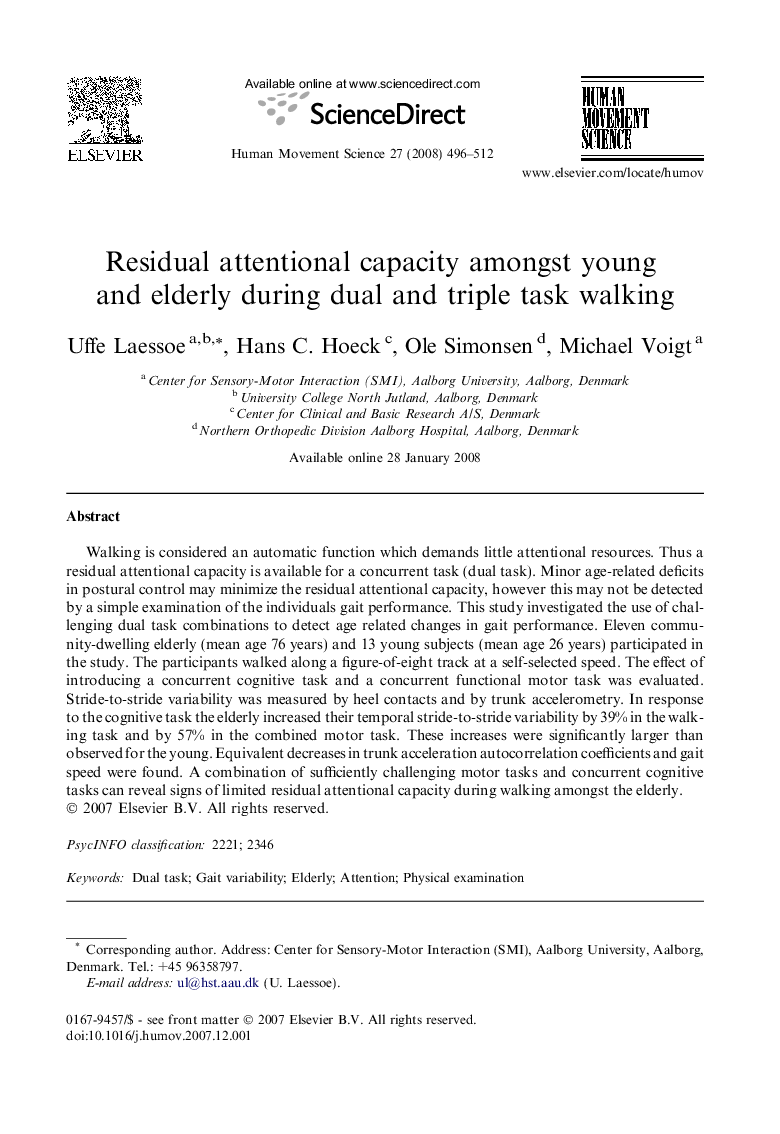| Article ID | Journal | Published Year | Pages | File Type |
|---|---|---|---|---|
| 928963 | Human Movement Science | 2008 | 17 Pages |
Walking is considered an automatic function which demands little attentional resources. Thus a residual attentional capacity is available for a concurrent task (dual task). Minor age-related deficits in postural control may minimize the residual attentional capacity, however this may not be detected by a simple examination of the individuals gait performance. This study investigated the use of challenging dual task combinations to detect age related changes in gait performance. Eleven community-dwelling elderly (mean age 76 years) and 13 young subjects (mean age 26 years) participated in the study. The participants walked along a figure-of-eight track at a self-selected speed. The effect of introducing a concurrent cognitive task and a concurrent functional motor task was evaluated. Stride-to-stride variability was measured by heel contacts and by trunk accelerometry. In response to the cognitive task the elderly increased their temporal stride-to-stride variability by 39% in the walking task and by 57% in the combined motor task. These increases were significantly larger than observed for the young. Equivalent decreases in trunk acceleration autocorrelation coefficients and gait speed were found. A combination of sufficiently challenging motor tasks and concurrent cognitive tasks can reveal signs of limited residual attentional capacity during walking amongst the elderly.
